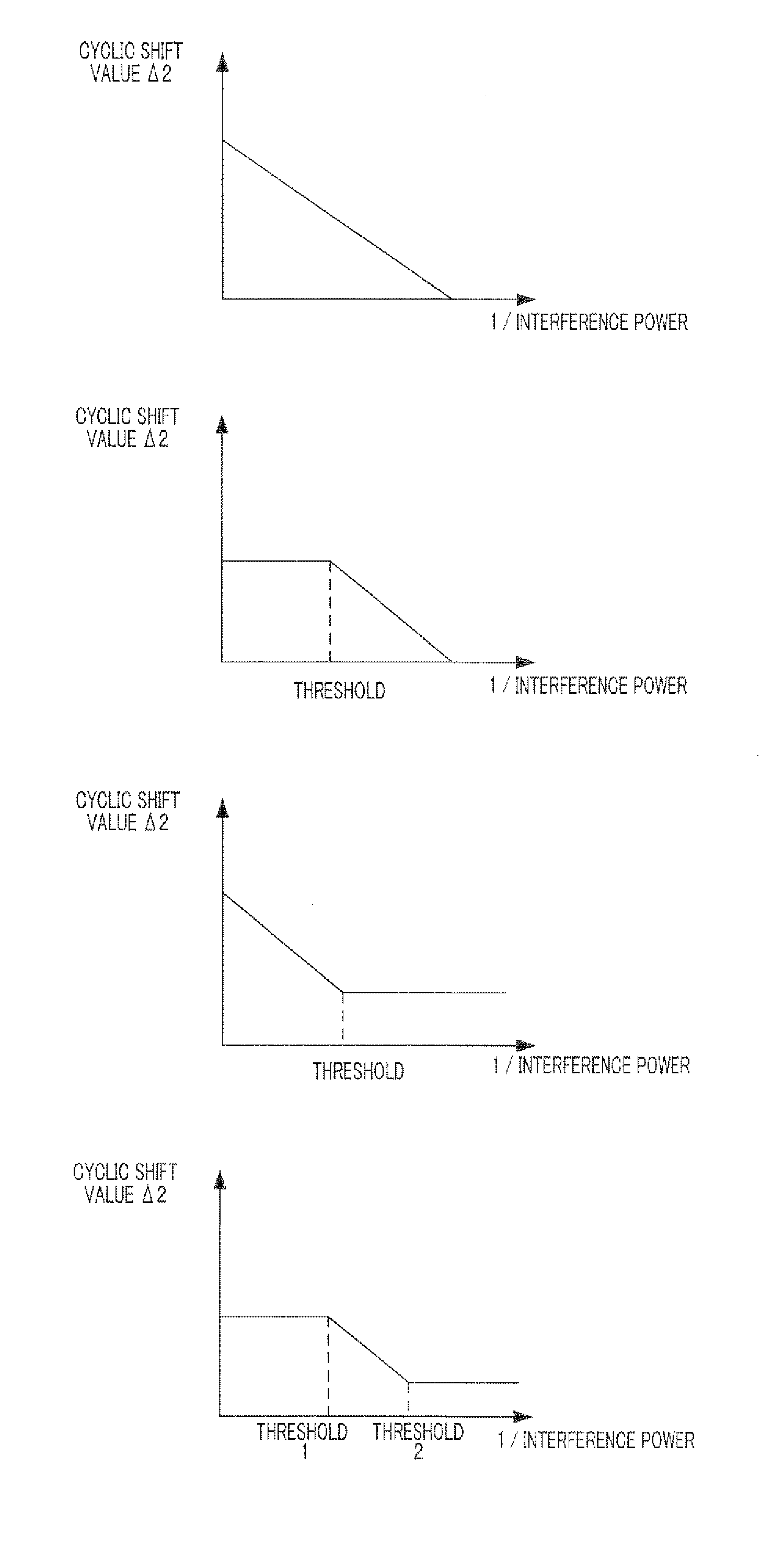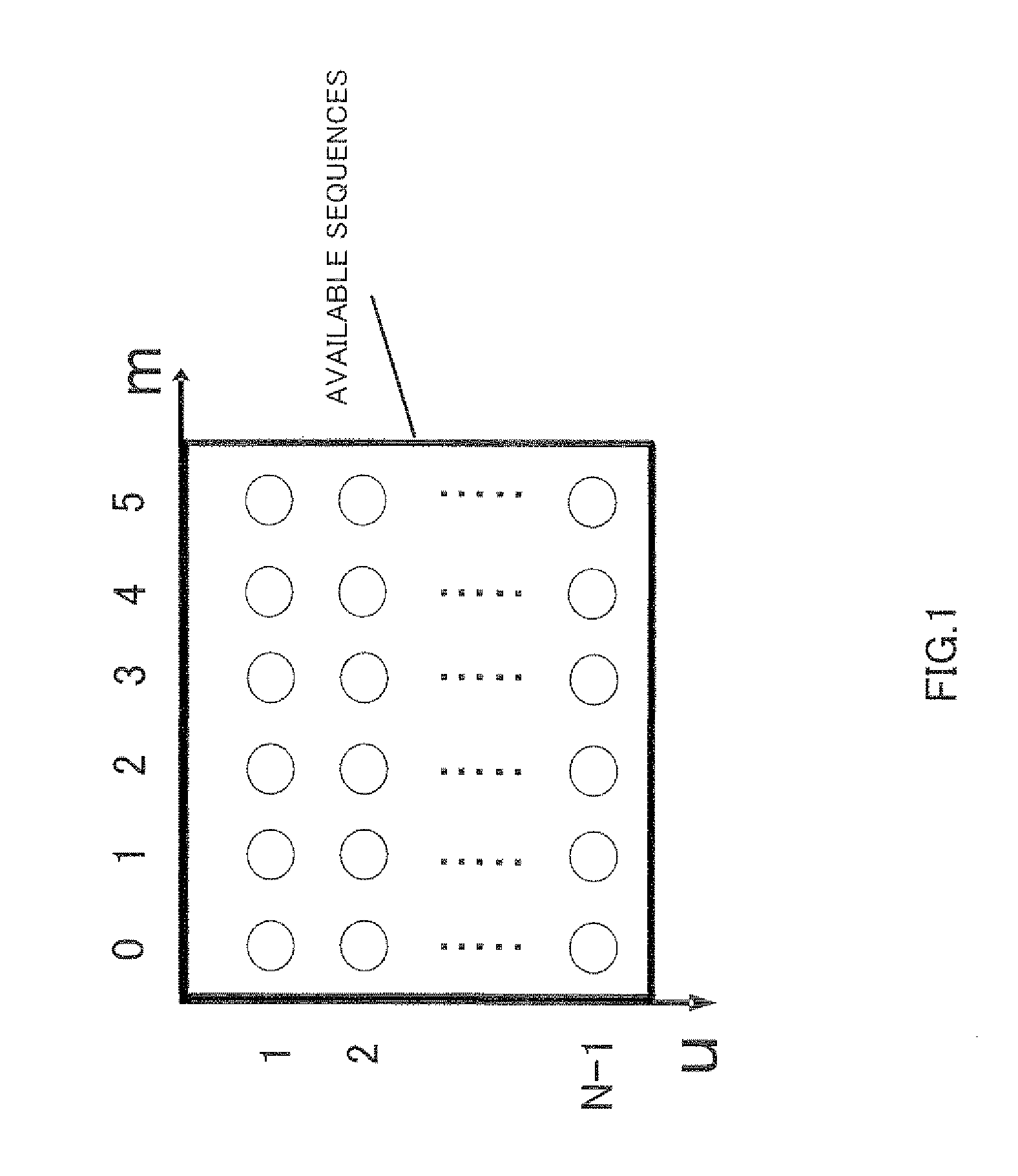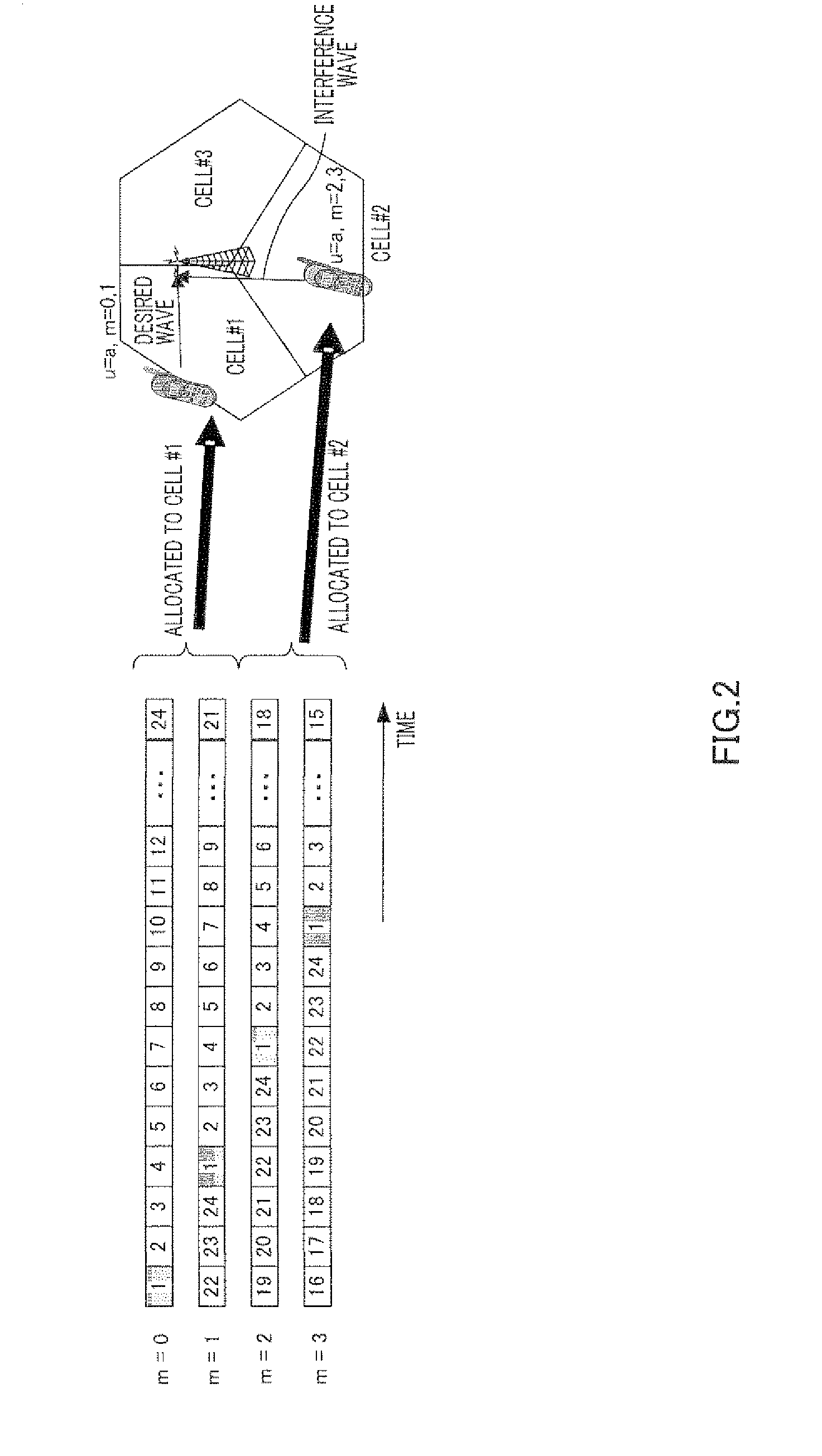Cyclic Shift Sequence Generation Method, Radio Communication Terminal Device, and Radio Communication Base Station Device
- Summary
- Abstract
- Description
- Claims
- Application Information
AI Technical Summary
Benefits of technology
Problems solved by technology
Method used
Image
Examples
embodiment 1
[0039]The configuration of terminal 100 according to Embodiment 1 of the present invention will be explained using FIG. 7. RF receiving section 102 performs receiving processing such as down-conversion and A / D conversion on a signal received via antenna 101, and outputs the signal subjected to receiving processing to demodulating section 103. Demodulating section 103 performs equalization processing and demodulation processing on the signal outputted from RF receiving section 102, and outputs the signal subjected to these processing to decoding section 104. Decoding section 104 performs decoding processing on the signal outputted from demodulating section 103, and extracts a data signal and control information. Further, in the extracted control information, the cyclic shift sequence numbers are outputted to cyclic shift sum calculating section 105, and the RB allocation information is outputted to mapping section 109.
[0040]Cyclic shift sum calculating section 105 calculates the sum ...
embodiment 2
[0072]A case will be explained with Embodiment 2 of the present invention where, based on interference from an adjacent cell, the cyclic shift interval Δ1 between cyclic shift sequences of a Zadoff-Chu sequence allocated in the same cell, and the cyclic shift interval Δ2 between cyclic shift sequences allocated between different cells between which frame synchronization is established, are controlled. Here, assume that one from a plurality of sequence groups is allocated to each base station, and each sequence group has the sequence numbers of ZC sequences allocated as the ZC sequences of transmission bandwidths.
[0073]The configuration of the terminal according to Embodiment 2 of the present invention will be explained. Here, cyclic shift sum calculating section 105 will be explained using FIG. 7 because the configuration of a terminal according to the present embodiment is similar to the configuration shown in FIG. 7 of Embodiment 1, and differs from the configuration shown in FIG....
embodiment 3
[0089]A case will be explained with Embodiment 3 of the present invention where Δ2−Δ1 is increased or decreased according to an increase or decrease of adjacent-cell interference to desired waves. Here, the function f of Δ2−Δ1=f (I / inter-cell interference) is defined, and Δ1 and Δ2 are changed based on this relationship. For example, if Δ1 is fixed and Δ2 is variable, the following four types are defined.
[0090]First, FIG. 13A illustrates the first type. As shown in this figure, when interference power is smaller, the cyclic shift interval Δ2 becomes smaller. Also, when interference power is larger, the cyclic shift interval Δ2 becomes larger.
[0091]Next, FIG. 13B illustrates the second type. As shown in this figure, when interference power is smaller, the cyclic shift interval Δ2 becomes smaller. Also, when interference power is larger, the cyclic shift interval Δ2 becomes larger. Here, a threshold is provided for 1 / interference power, and the cyclic shift interval Δ2 is fixed at the...
PUM
 Login to View More
Login to View More Abstract
Description
Claims
Application Information
 Login to View More
Login to View More - R&D
- Intellectual Property
- Life Sciences
- Materials
- Tech Scout
- Unparalleled Data Quality
- Higher Quality Content
- 60% Fewer Hallucinations
Browse by: Latest US Patents, China's latest patents, Technical Efficacy Thesaurus, Application Domain, Technology Topic, Popular Technical Reports.
© 2025 PatSnap. All rights reserved.Legal|Privacy policy|Modern Slavery Act Transparency Statement|Sitemap|About US| Contact US: help@patsnap.com



